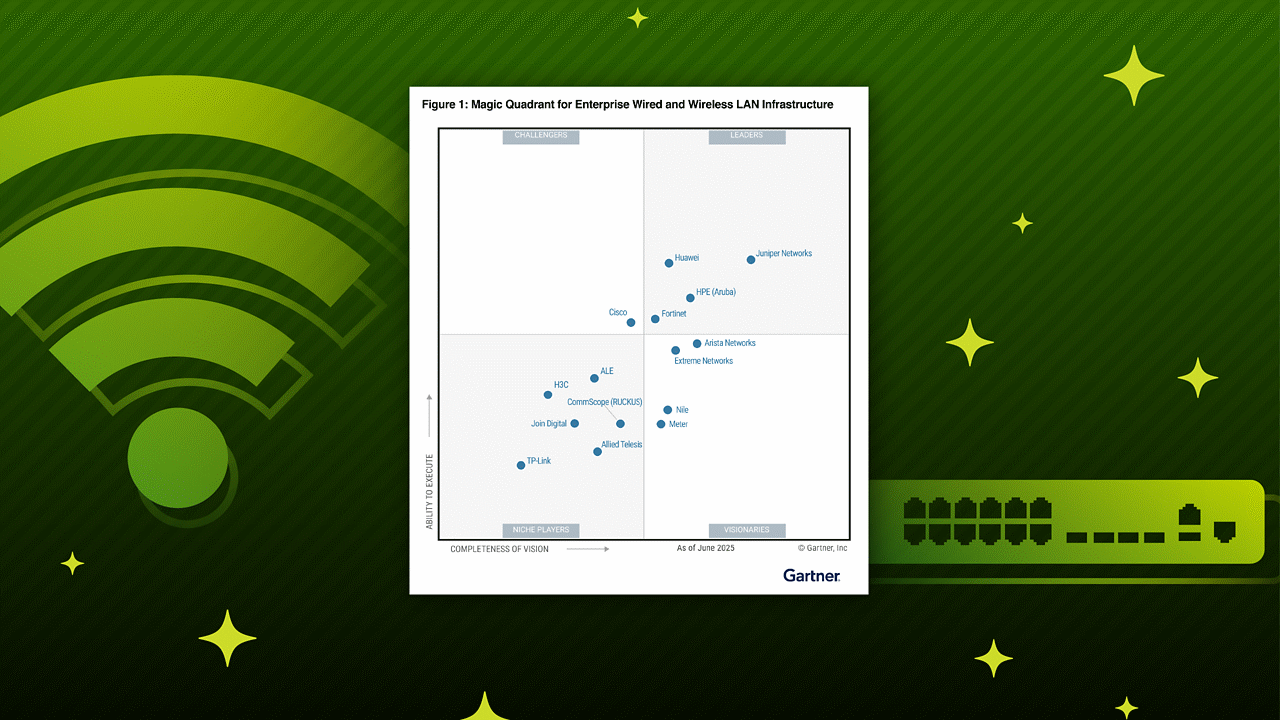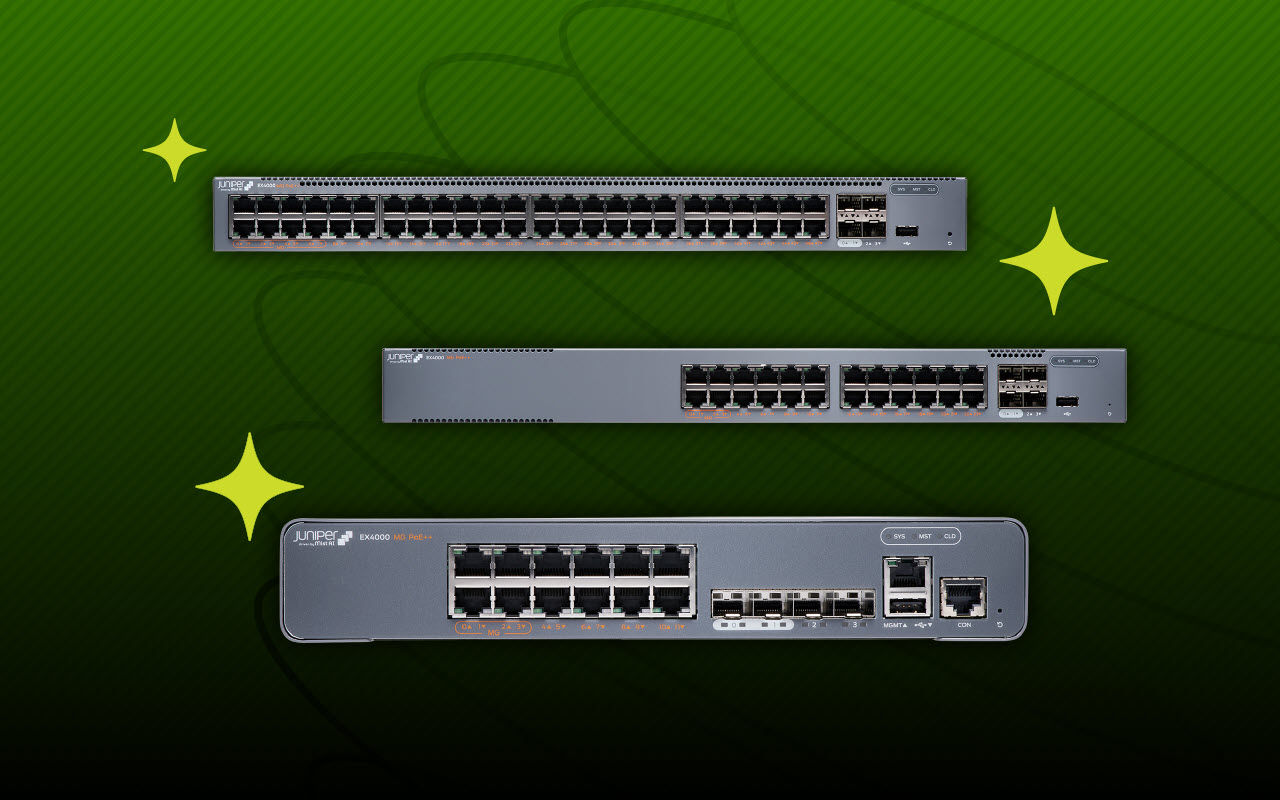AP37 and AP36 Access Point Datasheet
Download DatasheetProduct overview
The Juniper AP37 and AP36 are Juniper’s Wi-Fi 7 access points with built-in advanced location services and Juniper Mist integration.
AP37 and AP36 benefits
- Maximizes 6 GHz band, providing increased channel width and enabling multigigabit speeds
- 4x4 MIMO on 5 and 6 GHz
- Tri-band with dedicated fourth radio for supporting growing mobility demands
- Patented vBLE technology delivers industry-leading indoor location services accuracy and ease of use
- Flexible integrated omnidirectional, directional, and external antenna options
Juniper Mist benefits
- Fast and reliable deployment and ease of ongoing management
- Centralized control and visibility
- Quick access to new features and functionality with no disruption to services
- Agility to scale as network needs grow
Product Description
The Juniper® AP37 and AP36 Series indoor Wi-Fi 7 tri-band APs are engineered to deliver multigigabit throughput and resilient converged-connectivity in demanding enterprise, retail, and campus environments.
AP37
The Juniper AP37 delivers purpose-built Wi-Fi 7 performance for growing organizations requiring advanced wireless capabilities. With a tri-band (2.4 GHz, 5 GHz, and 6 GHz) configuration and a dedicated scanning radio, it provides exceptional coverage and capacity to meet your needs. The AP37 enhances wireless experiences through patented virtual BLE (vBLE) technology, enabling personalized location services including user engagement, asset visibility, and contact tracing, making it ideal for retail, education, and mid-sized enterprise deployments seeking a balance of performance and specialized features.
AP36
The Juniper AP36 offers streamlined Wi-Fi 7 connectivity designed for efficient deployments across diverse enterprise environments. Featuring the same powerful tri-radio, tri-band (2.4 GHz, 5 GHz, and 6 GHz) configuration and dedicated scanning radio as the AP37, it delivers resilient performance without compromise. The AP36 provides an accessible path to next-generation wireless technology, making it the perfect solution for organizations seeking essential Wi-Fi 7 capabilities with deployment flexibility for campus, retail, and business settings. The AP36M offers the additional flexibility of software selectable built-in directional antennas or the use of pluggable external antennas from a single AP.
Combining enterprise‑grade Wi‑Fi with patented virtual Bluetooth LE (vBLE) technology, the AP37 further enhances wireless networks through support for personalized location services, including user engagement, asset visibility, and contact tracing. The unique engineering of the AP37 and AP36 eliminates the need for battery‑powered BLE beacons or manual calibration. By providing one‑to‑three‑meter accuracy, the AP37 and AP36 set the standard in location services while ensuring business continuity and operational efficiency.
While wired and wireless networks are business critical, without the right architecture they can be harder to operate given the sheer number of mobile and IoT devices—not to mention the extensive variety of hardware, operating systems, and applications currently in use. Traditional architectures—highly manual and network‑centric—lack the scale, flexibility, and end‑to‑end visibility required to support modern mobility requirements and the IT departments that manage them.
Juniper AI-native network
Juniper Mist brings true innovation to wireless networking with the world’s first AI-Native wireless LAN (WLAN). Mist, Juniper's AI-native networking platform makes Wi-Fi predictable, reliable, and measurable, offering unprecedented visibility into the user experience through unique service-level expectation (SLE) metrics.
Proactive, AI-native automation and a self-healing network replace time-consuming manual tasks, lowering Wi-Fi operational costs and saving substantial time and money. All operations are managed using the open and programmable microservices that are based on the Juniper Mist cloud architecture.
The Juniper Mist cloud architecture
The Juniper Mist cloud‑native, AI‑native microservices architecture delivers unparalleled agility, scale, and resiliency to your network. It lowers OpEx and delivers unprecedented insights into network performance, behaviors, traffic patterns, and potential trouble spots by using data science to analyze large amounts of rich metadata collected by the Juniper access points. Juniper AI solutions for Wi‑Fi optimize operator and user experiences with secure client‑to‑cloud automation, insight, and AI‑native actions. With Mist, purpose‑built to leverage AIOps, the AP37 and AP36 harness the faster speed, power, and performance of Wi‑Fi 7 and assure an excellent experience for all users and devices and the best end‑to‑end operator experiences.
Juniper access point family
| AP47 | AP37 | AP36 | AP66 | |
| Deployment | Indoor | Indoor | Indoor | Indoor/Outdoor |
| Wi-Fi standard | Wi-Fi 7 802.11be (4x4:4) | Wi-Fi 7 802.11be 5/6 GHz: (4x4:4) 2.4 GHz: (2x2:2) | Wi-Fi 7 802.11be 5/6 GHz: (4x4:4) 2.4 GHz: (2x2:2) | Wi-Fi 7 802.11be (2x2:2) |
| Number of Wi-Fi radios | 4 | 4 | 4 | 4 |
| Wi-Fi radio modes | 2.4/5/6 GHz + 5 GHz + 6 GHz | 2.4 GHz + 5 GHz + 6 GHz | 2.4 GHz + 5 GHz + 6 GHz | 2.4 GHz + 5 GHz + 6 GHz |
| Scanning radio | Dedicated | Dedicated | Dedicated | Dedicated |
| Antenna options | Internal / Directional / External | Internal | Internal / Directional / External | Internal / Directional |
| Virtual BLE | Yes | Yes | No | No |
| Ultra-Wideband (UWB) | Yes | No | No | No |
| USB | Yes | Yes | Yes | No |
| IoT sensors | Pressure, temperature, accelerometer | Pressure, temperature, accelerometer | Pressure, temperature, accelerometer | Accelerometer |
| GNSS/GPS | L1/L5 | L1/L5 | L1/L5 | L1/L5 |
| Secondary Ethernet port | Yes, dual PoE failover | Yes | Yes | No |
| Warranty | Limited lifetime | Limited lifetime | Limited lifetime | One year |
Services available for the Juniper AP37 and AP36 Wi-Fi cloud services
Juniper Wi-Fi Assurance
For IT and NOC teams
- Predictable and measurable Wi-Fi
- SLE support
- WLAN policy fabric for role-based access
- Customizable guest Wi-Fi portal
- Radio Resource Management (RRM), driven by AI
Marvis® AI Assistant
For IT helpdesk teams
- AI-native virtual network assistant
- Natural language processing interface
- Anomaly detection
- Client SLE visibility and enforcement
- Data science-driven root cause analysis
Bluetooth cloud services
Juniper Mobile Engagement
For digital experience teams
- Accurate (1-3m) turn-by-turn navigation
- Sensor fusion with dead reckoning
- Unsupervised machine learning
- Virtual beacons with custom notifications
- Mobile SDK for iOS and Android
Juniper Asset Visibility
For process and resource improvement teams
- Identification of assets by name and location visibility
- Zonal/Room accuracy for third-party tags
- Historical analytics for asset tags
- Telemetry for asset tags (temperature, motion, and other data)
- APIs for viewing assets and analytics
Analytics cloud services
Juniper Premium Analytics
For network teams
- Baseline analytics features come included with Wi-Fi Assurance, User Engagement, and Asset Visibility subscriptions
- End-to-end network visibility
- Orchestrated networking and application performance queries
- Simplified network transparency
For business teams
- Baseline analytics features come included with Wi-Fi Assurance, User Engagement, and Asset Visibility subscriptions
- Customer segmentation and reporting based on visitor telemetry
- Customized dwell and third-party reporting for traffic and trend analysis
- Correlation of customer-guest traffic and trend analysis
- Correlated customer-guest traffic and trend analysis
Access point features
High-performance Wi-Fi
The AP37 and AP36 Series are four‑radio, 802.11be Wi‑Fi 7 APs. Three four‑spatial stream data serving radios with maximum data rates of 11528 Mbps in the 6 GHz band, 5764 Mbps in the 5 GHz band, and 688 Mbps in the 2.4 GHz band. A dedicated fourth tri‑band scanning radio provides WIDS/WIPS, spectrum analysis, sensor and location analytics. With 802.11be Multi-Link Operation (MLO), Orthogonal Frequency Division Multiple Access (OFDMA), Multi‑User Multiple Input Multiple Output (MU‑MIMO), and BSS Coloring technologies, both AP37 and AP36 Series offer performance at unprecedented levels to support new bandwidth‑hungry applications and soaring device densities.
Wi-Fi 7 amendment
The new 802.11be amendment (Wi-Fi 7) expands the capabilities of Wi‑Fi 6E, including the use of up to 1200 MHz of the 6 GHz band for higher throughput and improved application performance. New capabilities include 320 MHz channels which provides double the throughput, MLO for more efficient load balancing and failover, Multi‑Resource Units (Multi‑RU), preamble puncturing, and 4K QAM for higher transmission rates and better user experiences. Only Wi‑Fi 7 and 6E client devices can use the 6 GHz band so there is no interference due to IoT or legacy devices.
AI for AX
Juniper automates and optimizes Wi‑Fi 7 features with AI for AX capabilities to optimize BSS Coloring, improve data transmission scheduling within OFDMA and MU‑MIMO, and assign clients to the best radio to boost the overall performance of the network.
Improved IoT operations
The AP37 Series extends network monitoring and insights to vBLE (AP36 supports omnidirectional BLE), Thread*, Zigbee*, or Matter* to increase IoT capabilities with dual 802.15.4 radios for concurrent location services and electronic shelf labels (ESL).
*future considerations
Greater spectral efficiency
OFDMA improves spectral efficiency so that an increasing density of devices can be supported on the network. Density has become an issue with the rapid growth of IoT devices that often utilize smaller data packets than mobile devices and, hence, increase the burden and contention on the network. Additionally, BSS Coloring improves the coexistence of overlapping BSSs and allows spatial reuse within a given channel by reducing packet collisions.
Automatic RF optimization
Reliable RF optimization is even more critical with the addition of 6 GHz spectrum. Radio Resource Management uses a dedicated sensor radio to automate dynamic channel and power assignments, thus avoiding Wi‑Fi and external sources of interference. The Marvis® AI engine continuously monitors coverage and capacity SLE metrics to learn and optimize the RF environment. A learning algorithm uses hysteresis on a 24‑hour window to conduct a sitewide rebalancing for optimal channel and power assignment.
In some regulatory domains, there are special rules to govern the usage of 6 GHz when the AP has either removable External Antennas or is weatherized.
6 GHz Device Classification
AP36/AP37-US/-WW:
- Low Power Indoor and Standard Power
AP36M-US:
- Low Power Indoor and Standard Power with built-in directional antenna
- Standard Power only with External Antennas
AP36M-WW:
- Low Power Indoor and Standard Power with built-in directional antenna
- Low Power Indoor and Standard Power with External Antennas in most regulatory domains
- Standard Power only with External Antennas in some regulatory domains (Canada)
Proactive insight and action
A dedicated, tri‑band fourth radio collects data for Juniper Mist, which uses machine learning to analyze user experiences, correlate problems, and automatically detect their root causes. These metrics are used to monitor SLEs and provide proactive recommendations to ensure problems don’t occur (or are fixed as quickly as possible when they do).
Improved IoT battery efficiency
By incorporating the 802.11ax target wake time (TWT) capability and Bluetooth 6.0, AP37 and AP36 Series APs help extend the battery life of IoT devices, particularly as additional ones join the network.
Dynamic debugging
Constantly monitor services running on the AP37 and AP36, sending alerts whenever a service behaves abnormally. Dynamic debugging relieves IT of having to worry about an AP going offline or any services running on it becoming unavailable.
Dynamic packet capture and dynamic spectrum capture
The Juniper Mist platform automatically captures packets and radio frequency spectrum and streams them to the cloud when major issues are detected. AI‑native dynamic packet capture and dynamic spectrum capture enable “network rewind” to identify and resolve wireless interference issues more efficiently. Both features save IT teams time and effort. They use sniffers to reproduce and capture data for troubleshooting, which eliminates the need for truck rolls.
Marvis AI Assistant
Marvis AI Assistant is a natural language processing-based assistant with a conversational interface that helps with the understanding of user intent and goals, simplifies troubleshooting, and collects network insights. Marvis AI Assistant uses AI and data science to proactively identify issues, determine the root causes and scope of impact, and gain insights into your network and user experiences. Marvis AI Assistant eliminates the need to manually hunt through endless dashboards and CLI commands.
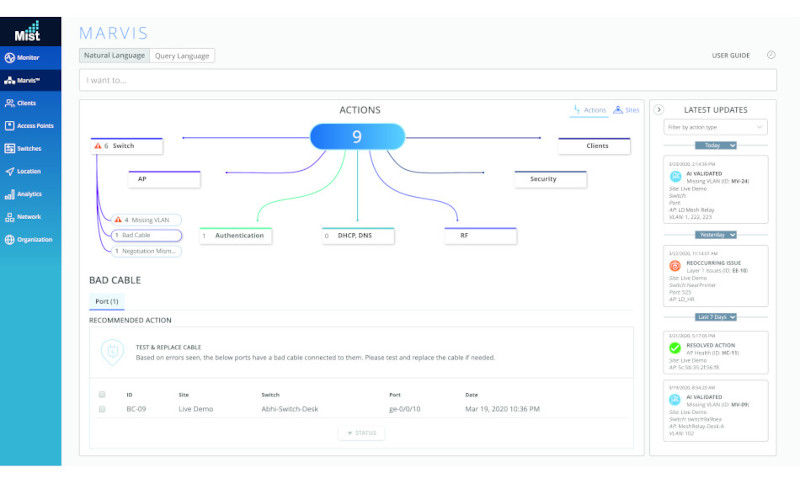
Effortless, cloud-based setup and updates
The AP37 and AP36 automatically connect to the Juniper Mist cloud, download its configuration, and join the appropriate network. Firmware updates are retrieved and installed automatically, ensuring that the network is always up to date with new features, bug fixes, and security updates.
Premium Analytics
Juniper® Wireless Assurance, User Engagement, and Asset Visibility services include a base analytics capability that analyzes up to 30 days of data, which simplifies the process of extracting network insights across your enterprise. If you require dynamic insights like motion paths and other third‑party data and would like the option of customized reports, the Juniper Premium Analytics service is available as an additional subscription.
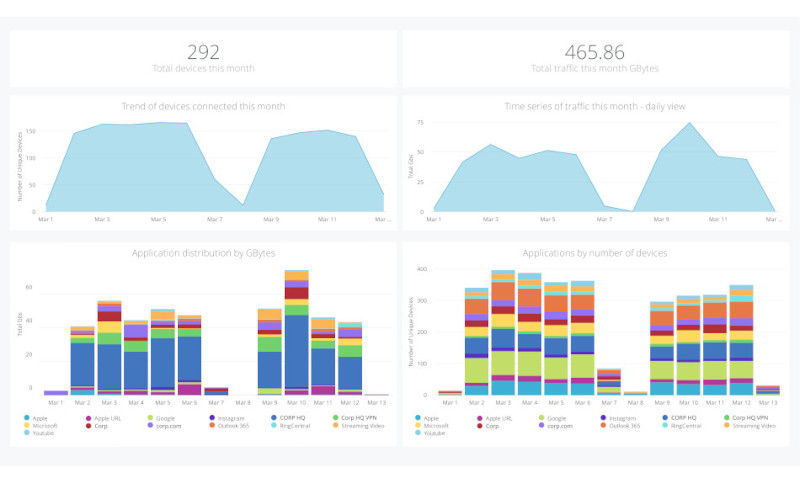
High-accuracy indoor location
The AP37 has patented vBLE technology controlled from the Juniper Mist cloud. Passive antennas enhance the power of a single transmitter and produce directional beams (or can be combined to act as an omnidirectional radio) to accurately detect distance and location with 1‑3‑meter accuracy. With Juniper’s next-generation, patented vBLE technology, you can deploy an unlimited number of virtual beacons in your physical environment with no need to install battery‑powered physical BLE beacons. This maximizes scalability and optimizes your deployment investment in location-based services. Support for Bluetooth 6.0 boosts IoT device range and battery life.
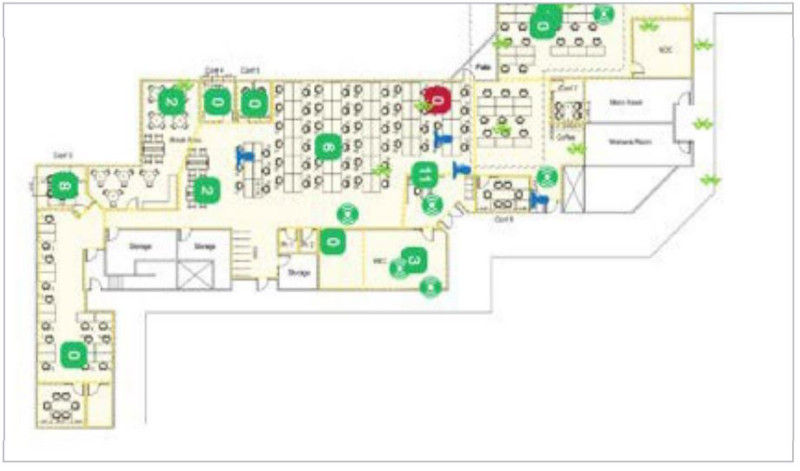
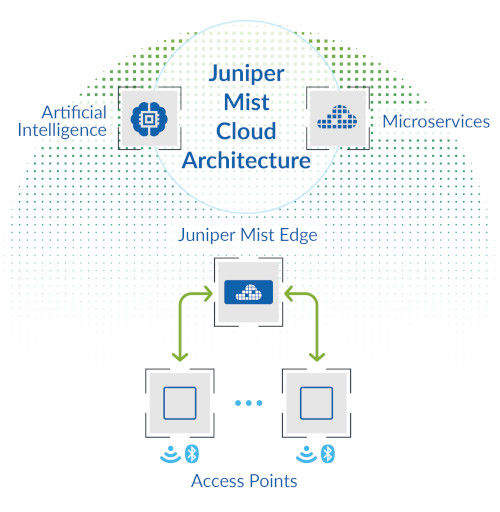
Juniper Mist Edge
Juniper APs offer a flexible data plane. Juniper Mist Edge is an on‑premises appliance that runs a tunnel termination service. Traffic can be broken out locally or tunneled to Juniper Mist Edge.
Juniper Mist Edge use cases include seamless mobility in large campus environments, tunneling of guest traffic to a DMZ, IoT segmentation, and teleworker services.
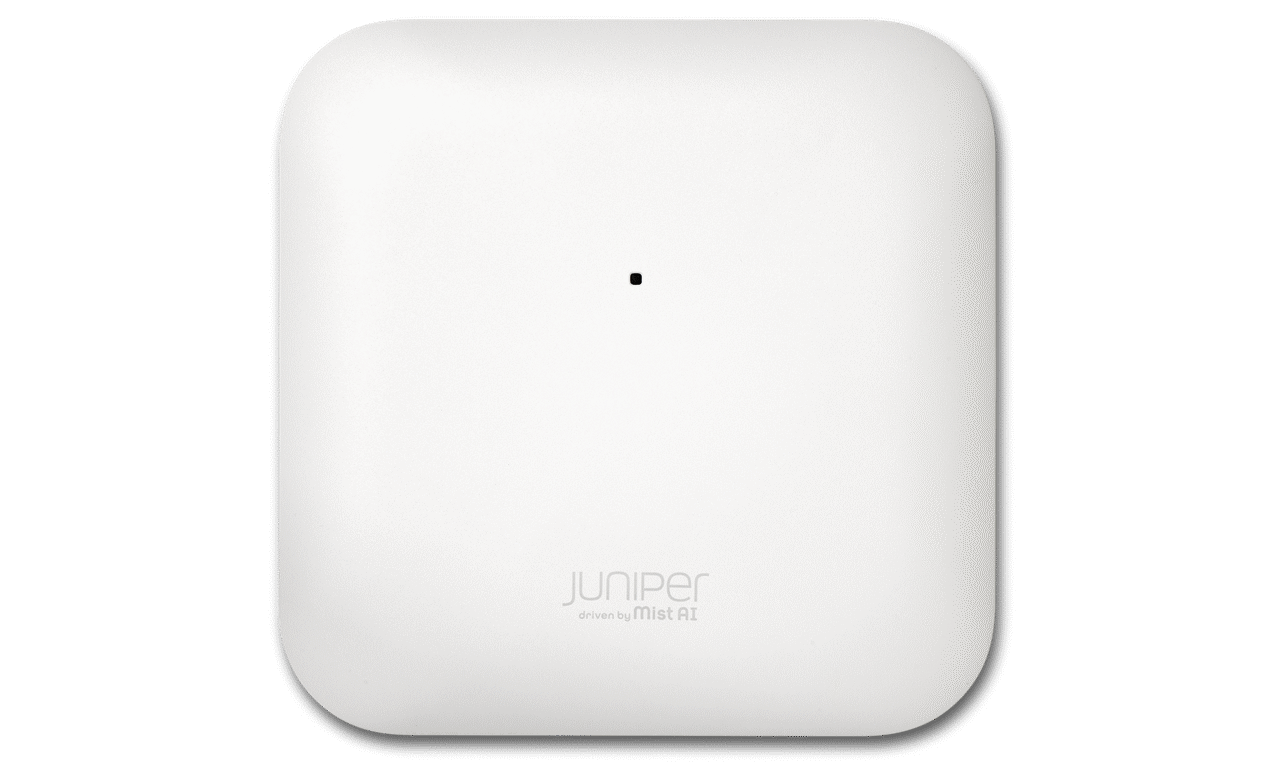
Top view of AP36 and AP37

Bottom view of AP36 and AP37
Specifications
| Wi-Fi Standard | Wi-Fi 7 802.11be backwards compatibility with 802.11a/b/g/n/ac/ax |
| Wi-Fi Radios | 2.4 GHz 802.11b/g/n/ac/ax/be radio 5 GHz 802.11a/n/ac/axbe radio 6 GHz 802.11ax/be |
| Combined Highest Supported Data Rates | Tri-Band: 17.98 Gbps – 2.4 GHz + 5 GHz + 6 GHz |
| 2.4 GHz | 2x2:2 802.11be up to 688 Mbps data rate |
| 5 GHz | 4x4:4 802.11be up to 5.76 Gbps data rate |
| 6 GHz | 4x4:4 802.11be up to 11.53 Gbps data rate |
| MIMO Operation |
|
| Dedicated Fourth Radio | 2.4 GHz, 5 GHz, and 6 GHz tri-band WIDS/WIPS, spectrum analysis, sensor and location analytics radio. |
| Internal Directional Antennas – AP36M | Pattern approximately 60 x 60 degrees, Four 2.4 GHz directional antennas with 6 dBi peak gain Four 5 GHz directional antennas with 8 dBi peak gain Four 6 GHz directional antennas with 8 dBi peak gain |
| IoT radios – AP37 | Dual core 802.15.4 radios and dual omnidirectional antennas, vBLE directional antenna array, Bluetooth 6.0. |
| IoT radios – AP36/AP36M | Dual core 802.15.4 radios and dual omnidirectional antennas, Bluetooth 6.0. |
| Beam forming | Transmit Beamforming and Maximal Ratio Combining |
| Power options | PoE PD Support via Eth0: 802.3bt: Full function. 802.3at: Reduced functionality. 802.3af: All radios disabled, cloud connectivity only. |
| Product dimensions | AP37, AP36, AP36M: 230 mm x 230 mm x 45 mm / 9.1” x 9.1” x 1.8” |
| Shipping box | 274 mm x 291 mm x 82 mm / 10.8” x 11.5” x 3.2” |
| Product weight | AP37: 1.55kg / 3.42lbs, AP36: 1.5kg / 3.31lbs, AP36M: 1.53kg / 3.37lbs |
| Operating temperature | AP37, AP36: 0°C to +40°C (32°F to 104°F), AP36M: -20°C to +50°C (-4°F to 122°F) |
| Operating humidity | 10% to 90% maximum relative humidity, non-condensing |
| Operating altitude | 3,048 m (10,000 ft) |
| Trusted Platform Module (TPM) | Included a TPM for infrastructure security |
| Supported frequency bands (country-specific restrictions apply) | 2.400 to 2.4835 GHz ISM 5.150 to 5.250 GHz U-NII-1 5.250 to 5.350 GHz U-NII-2A 5.470 to 5.725 GHz U-NII-2C 5.725 to 5.850 GHz U-NII-3/ISM 5.925 to 6.425 GHz U-NII-5 6.425 to 6.525 GHz U-NII-6 6.525 to 6.875 GHz U-NII-7 6.875 to 7.125 GHz U-NII-8 |
I/O and indicators
| IoT sensors | Pressure, temperature, accelerometer |
| GNSS/GPS | GNSS L1 supporting GPS, Galileo, GLONASS, BeiDou, and QZSS GNSS L5 supporting GPS, Galileo, BeiDou, and NavIC |
| USB | USB 2.0 support interface (up to 4.5W) |
| Eth0 | 100/1000/2500/5000/10000 Base-T (802.3bz); RJ45, PoE PD |
| Eth1 | 10/100/1000 Base-T; RJ45, PoE 15.4W PSE mode (requires 802.3bt on Eth0) |
| AP36M external antenna | Two pluggable antenna connectors; 2.4/5 GHz (4 pin), 6 GHz (6 pin) |
| Reset | Reset to the factory default settings |
| Indicators | One multicolor status LED |
| Traffic forwarding options | Eth0, Juniper Mist Edge |
Mounting brackets
| APBR-U2 | Universal bracket |
| APBR-ADP-M16 | 16mm threaded rod (M16-2) |
| APBR-ADP-T12 | 1/2” threaded rod |
| APBR-ADP-T58 | 5/8” Threaded Rod |
| APBR-ADP-CR9 | 9/16” T-Rail, Channel Rail |
| APBR-ADP-RT15 | 15/16” T-Rail |
| APBR-ADP-WS15 | 1-1/2” T-Rail |
Ordering information
| United States only | AP37-US (Internal Omni Antenna, vBLE), AP36-US (Internal Omni Antenna), AP36M-US (Directional Antenna & External Antenna) |
| Outside of United States | AP37-WW (Internal Omni Antenna, vBLE), AP36-WW (Internal Omni Antenna), AP36M-WW (Directional Antenna & External Antenna) |
About Juniper Networks
Juniper Networks is leading the convergence of AI and networking. Mist™, Juniper’s AI-native networking platform, is purpose-built to run AI workloads and simplify IT operations, assuring exceptional and secure user and application experiences—from the edge to the data center to the cloud. Additional information can be found at www.juniper.net, X, LinkedIn, and Facebook.
1000809 - 001 - EN SEPTEMBER 2025




